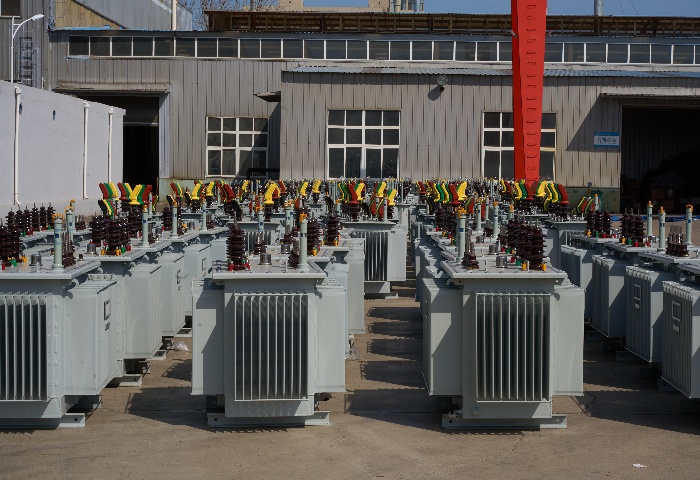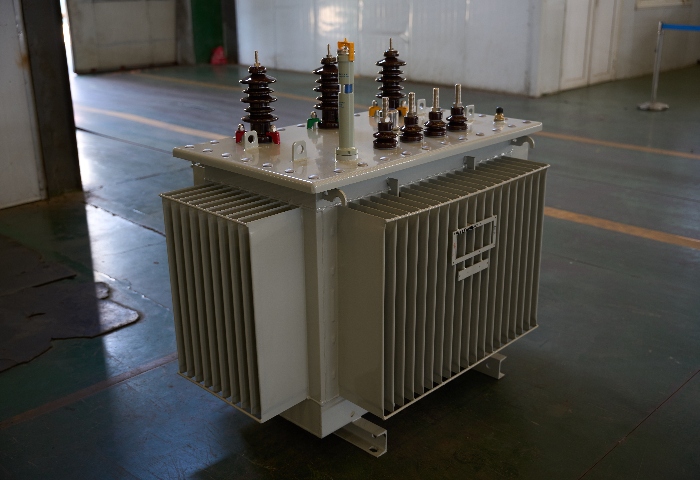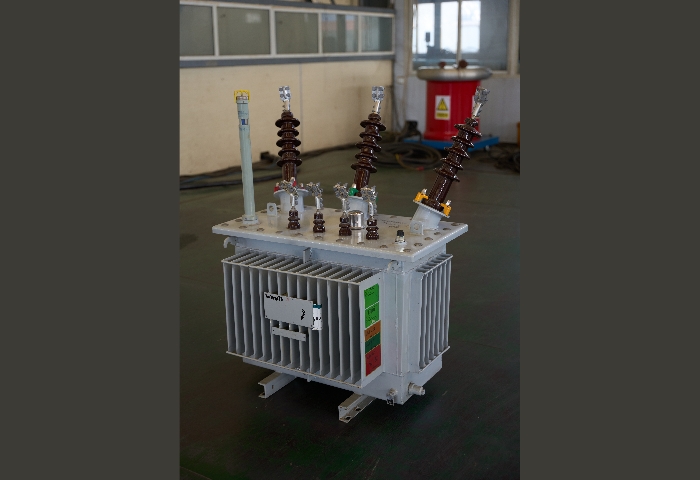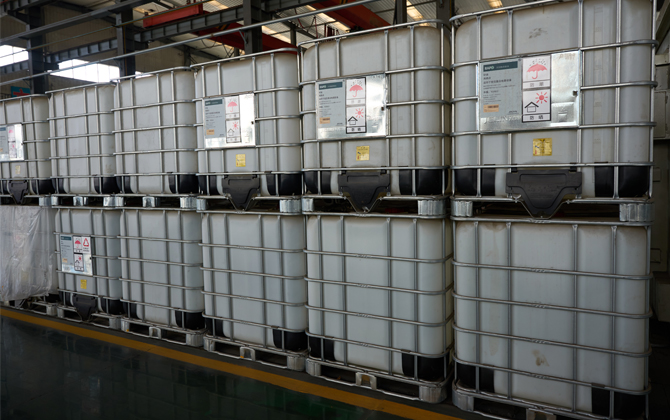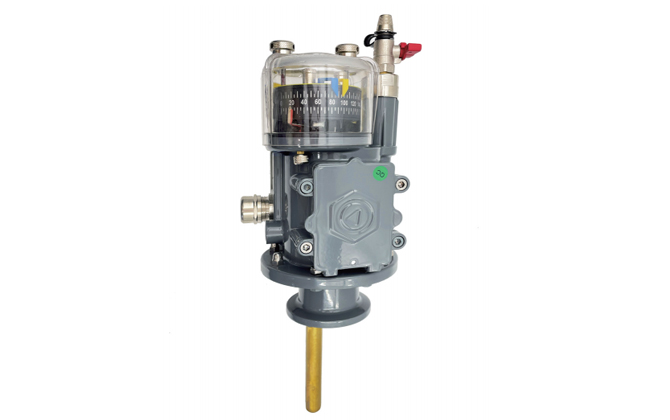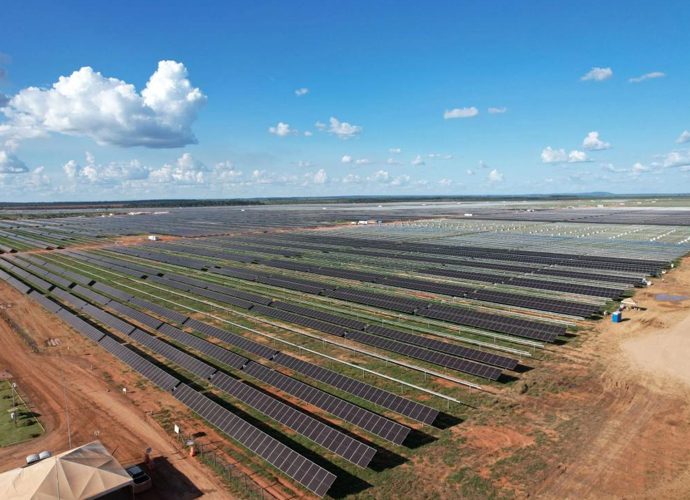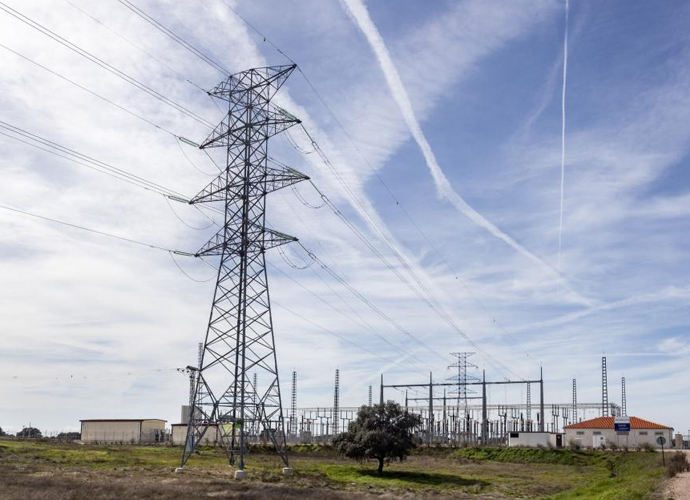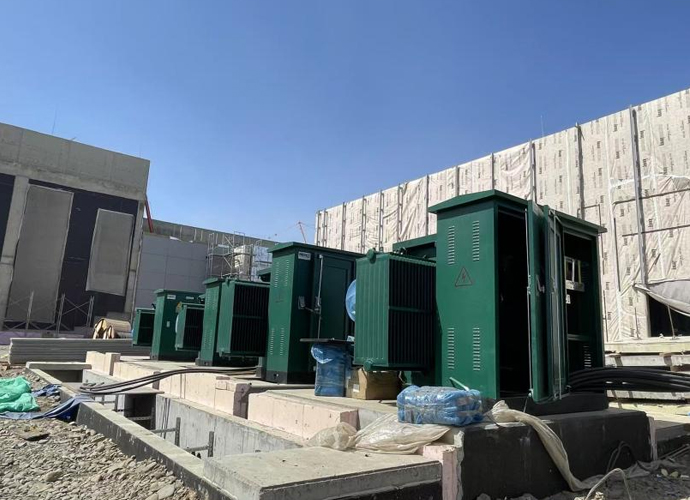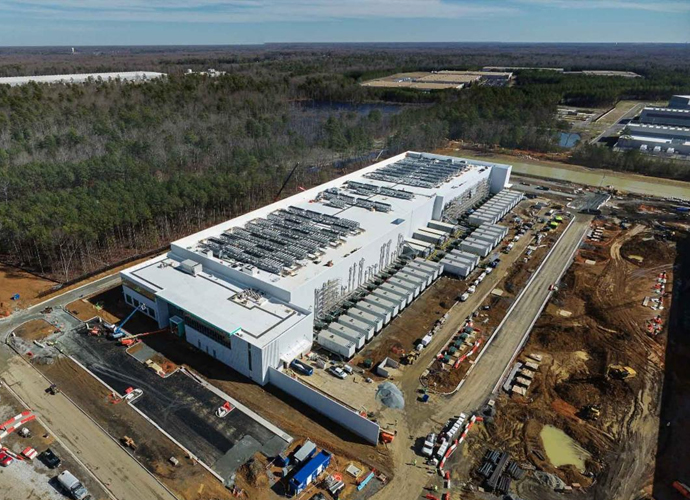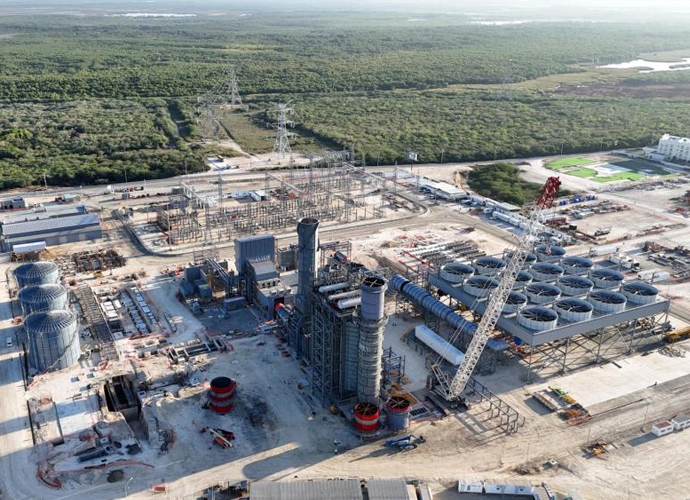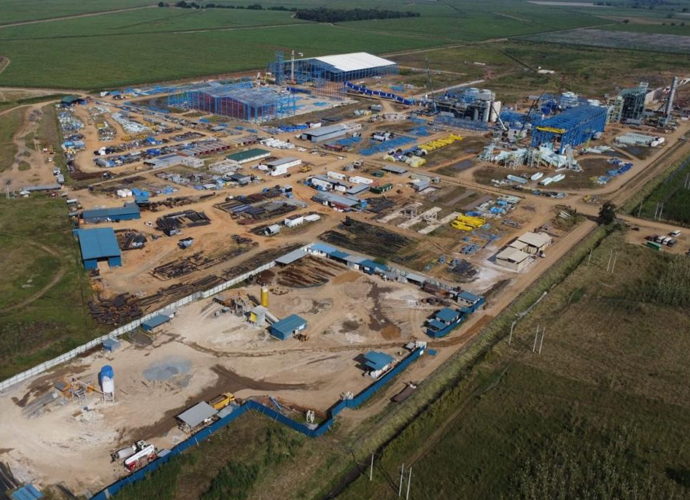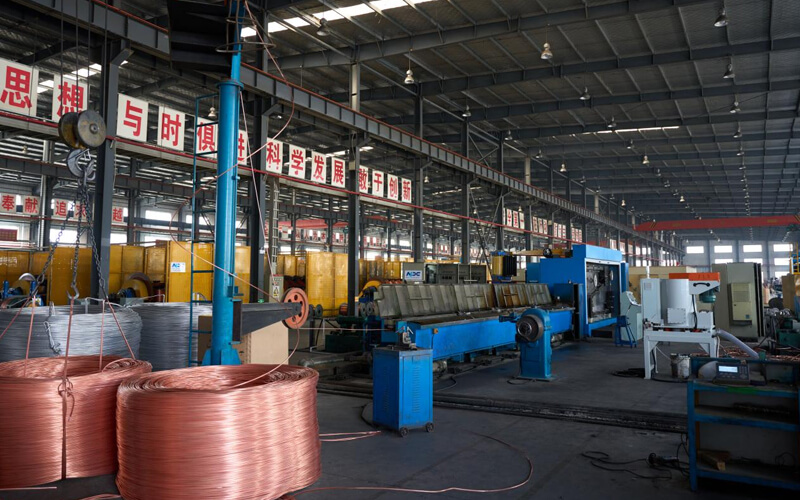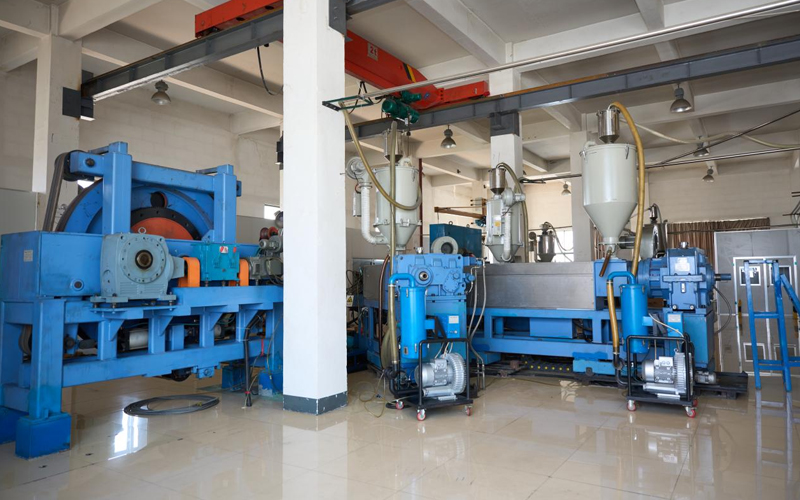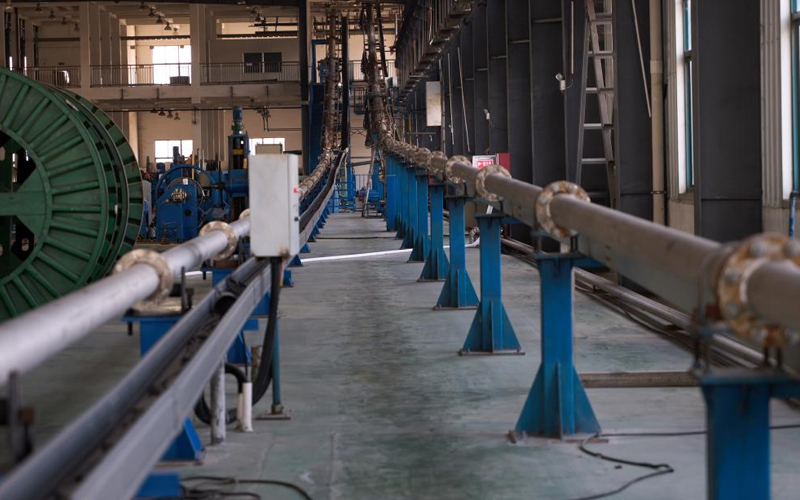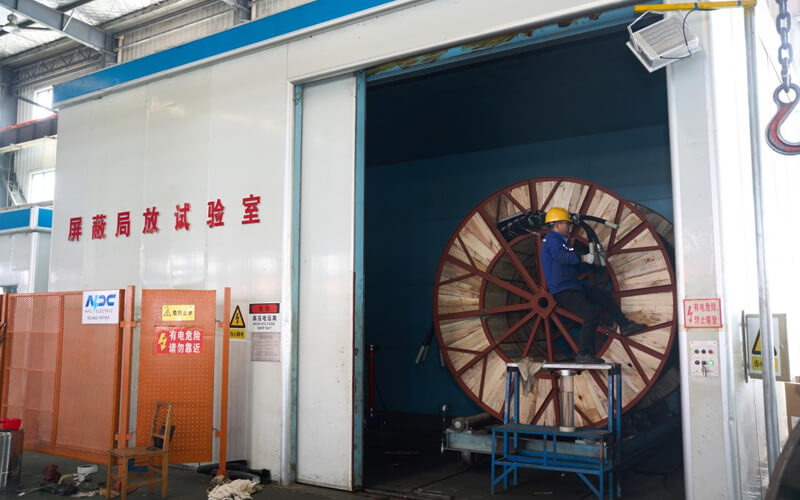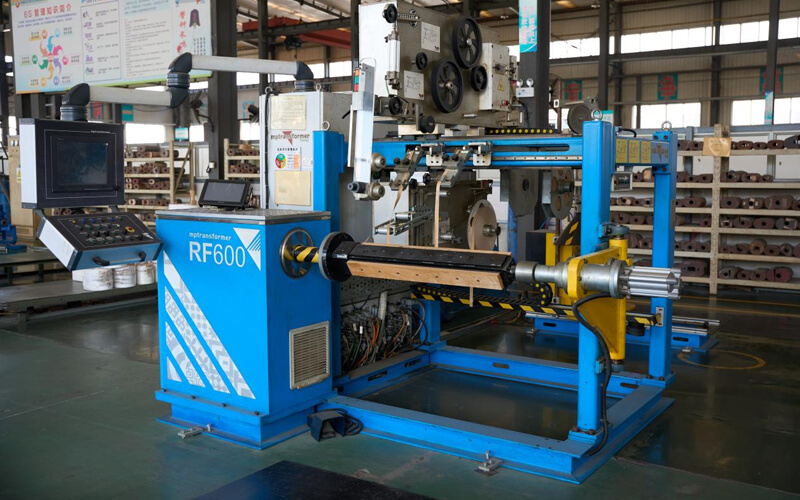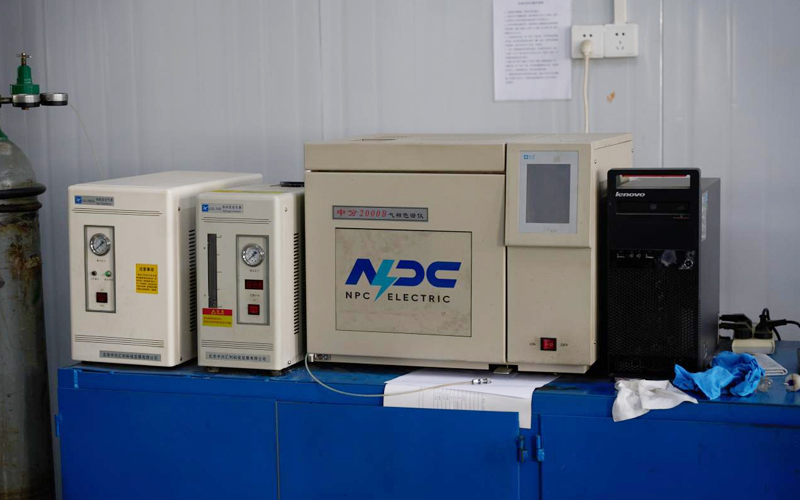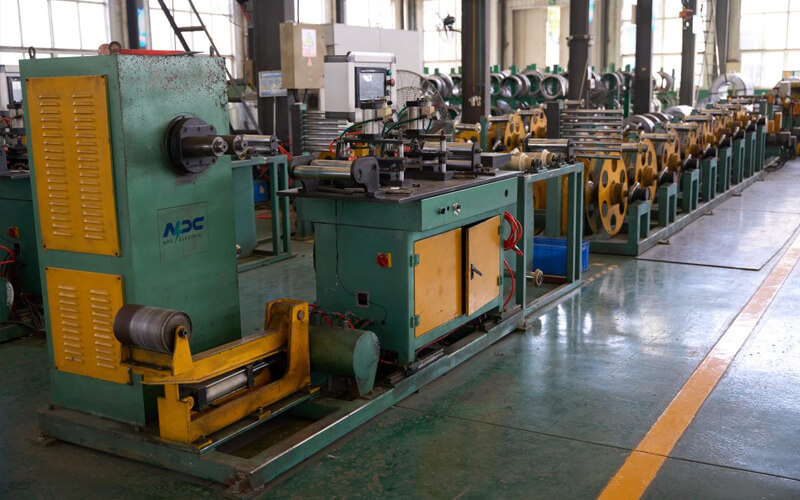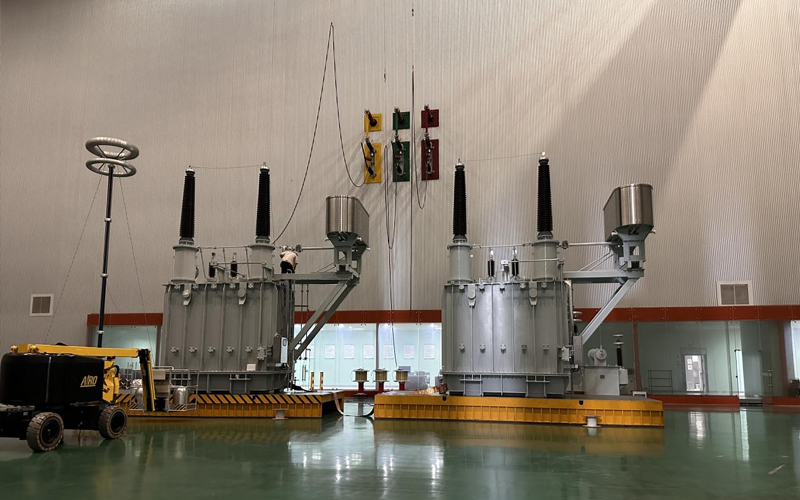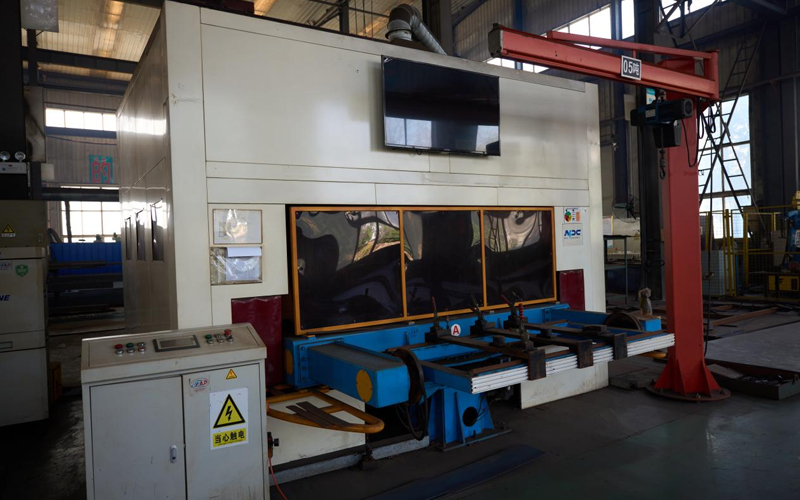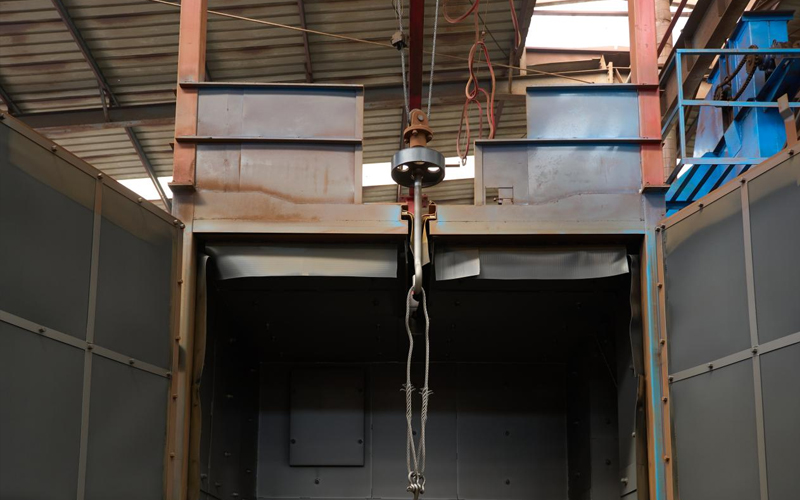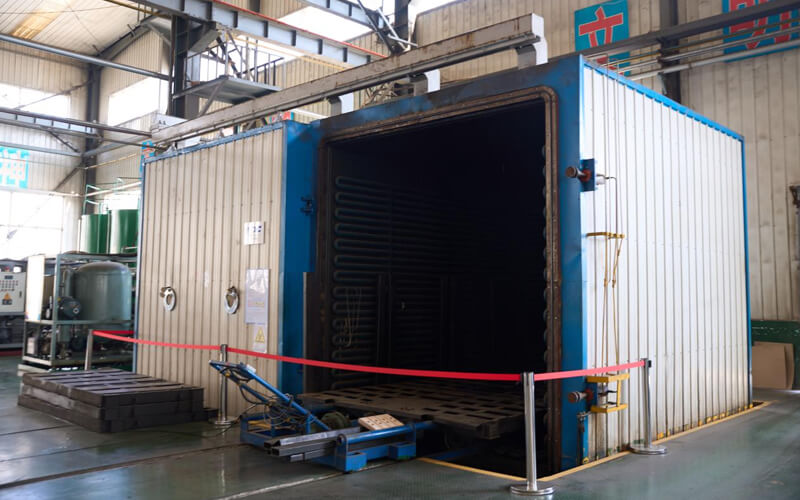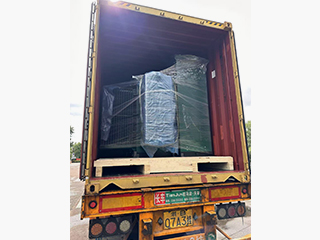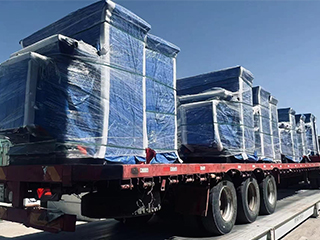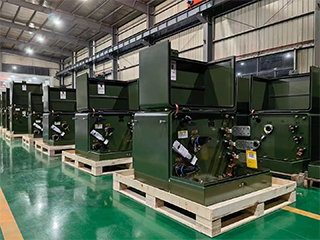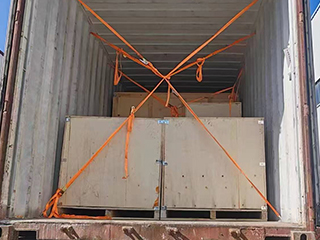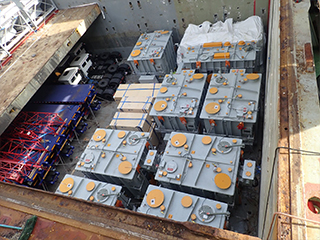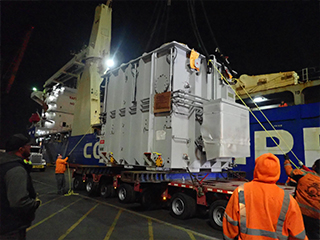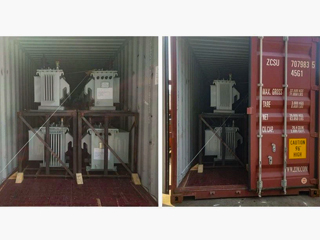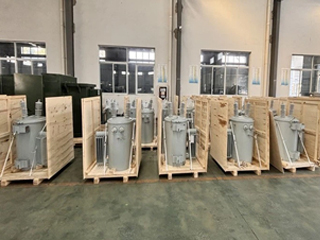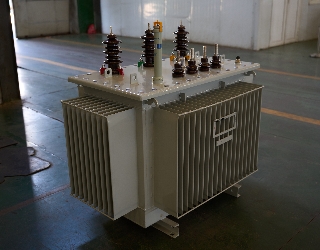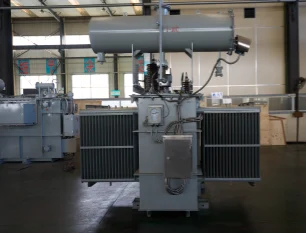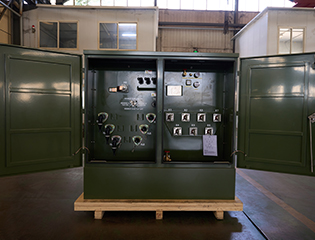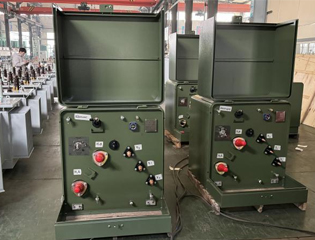160kVA Oil Immersed Transformer
- Primary Voltage Ratings 34.5-19.92/13.8-7.957/13.2-7.62/12.47-7.2, 24.94, 26.25, 33 or others
- Secondary Voltage Ratings 480/277V, 400/230V, 380/220V or customized
- H.V. Tap Range ± 2×2.5% HV taps or others
- Type Oil immersed distribution transformer
- BIL 30/95kV
- Standards IEEE, ANSI, NEMA
- Application Commercial Buildings, Agriculture, Power Distribution Substations etc
- Power Rating 160kVA
- Certificate ISO, CE, UL
- Cooling Method ONAN, ONAN/ONAF, KNAN, KNAN/KNAF
- Oil Mineral Oil or FR3
- Opeartion Step Down & Step Up
Technical Specifications
| Technical Specifications | ||
| Rated Power | 160 kVA | |
| Rating Primary Voltage | 2.4 - 34.5kV | |
| Secondary Voltage | 480/277V 400/230V 380/220V Customized |
|
| Frequency | 50/60Hz | |
| Vector Group | Dyn11, Yyn0, Dyn5 | |
| Winding Material | Aluminum/Copper | |
| Efficiency | As IEEE, Doe 2016, CAS Std or Customized | |
| Impedance Voltage | Nominal 2% or Customized 1.1-5.75% | |
| Altitude | ≤1,000m or Customized | |
| Color | ANSI 70 Light gray/Munsell 7GY3.29/1.5 or customized, etc | |
| Tank material | Mild Steel, 304 Stainless Steel | |
| Insulating Oil Weight | 265 kg | |
| Total Weight | 1100 kg | |
| Outline Dimensions(L×W×H)in. | 1350 × 950 × 1400(mm) | |
| HV Bushing |
| LV Bushing |
| Tap changer |
| Oil level gauge |
| Oil temperature indicator |
| Pressure relief device |
| Pressure vacuum gauge |
| Lifting hook for complete transformer |
| Name plate |
| Radiators |
| Oil upper filtering valve |
| Oil drain valve with 3/8" sampler |
Customization Optional
In terms of voltage, the primary voltage can be selected from common voltage levels such as 10kV, 20kV, and 35kV, and the secondary voltage is generally 0.4kV, etc., and special voltage combinations can also be customized according to the actual power grid conditions.
In terms of connection groups, Yyn0, Dyn11, etc., are commonly selected. The Dyn11 connection group can provide better adaptability to three-phase unbalanced loads, while Yyn0 is more suitable for some systems with specific requirements for neutral point grounding. Cooling methods include oil-immersed self-cooling (ONAN) and oil-immersed air cooling (ONAF). Oil-immersed self-cooling relies on natural convection and radiation heat dissipation, with a simple structure and reliable operation. It is suitable for places with relatively stable loads and good heat dissipation conditions; oil-immersed air cooling adds fan-assisted heat dissipation on the basis of self-cooling, which can effectively reduce the temperature of the transformer when the load is large or the ambient temperature is high, and improve the overload capacity.
Packing and Shipping
For this purpose, the Packaging and transportation of 160 kVA three-phase oil-immersed transformers involves a series of steps to ensure that the equipment arrives safely at the destination during transportation.
First, the transformer will be moisture-proofed to ensure that it is not affected by moisture during transportation. The transformer will be reinforced with packaging on the outside, using durable wooden boxes or steel frames to protect the equipment from external impact or physical damage during transportation. To ensure that the transformer does not leak during long-distance transportation, all joints and seals will be carefully checked to ensure that there is no oil leakage.
Before transportation, the transformer will be marked with relevant transportation labels, such as heavy object signs, transportation directions, and precautions, to remind transportation personnel to pay attention to safe operation. Depending on the different modes of transportation (such as land, sea, or air transportation), the transformer may have additional fixing devices to ensure that the equipment will not shift or tilt during transportation.
In addition, the packaging materials will also be customized according to the specific requirements of the destination, such as seismic packaging, anti-corrosion treatment, etc., to ensure that the transformer can reach the customer smoothly and is not affected by environmental changes during transportation.
Finally, after transportation is completed, the transformer will undergo an unloading inspection to confirm that the equipment is not damaged and ensure that it can be installed normally and put into use.
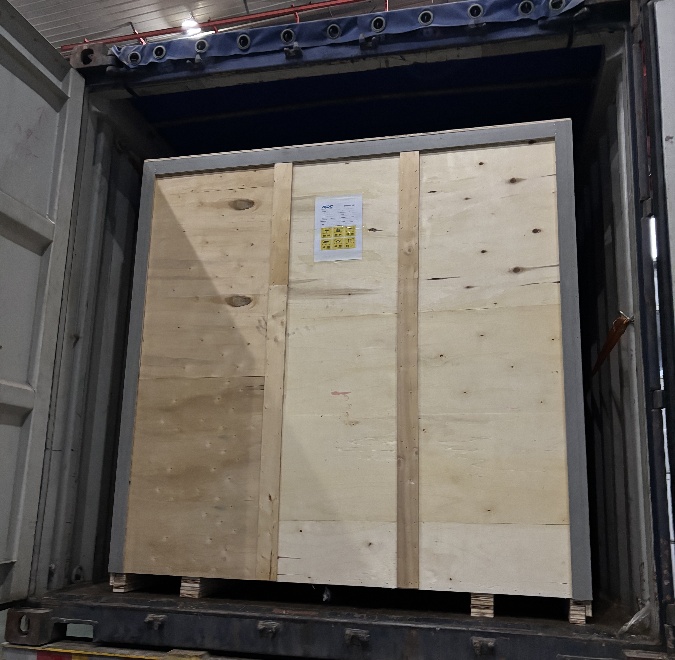
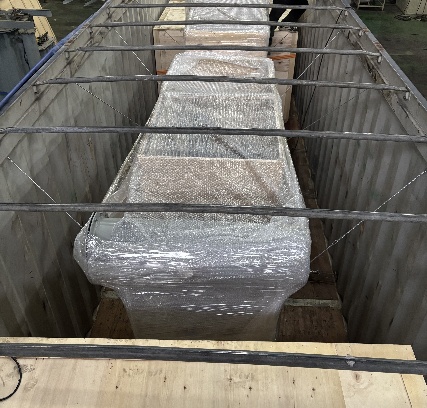
Manufacturer Test
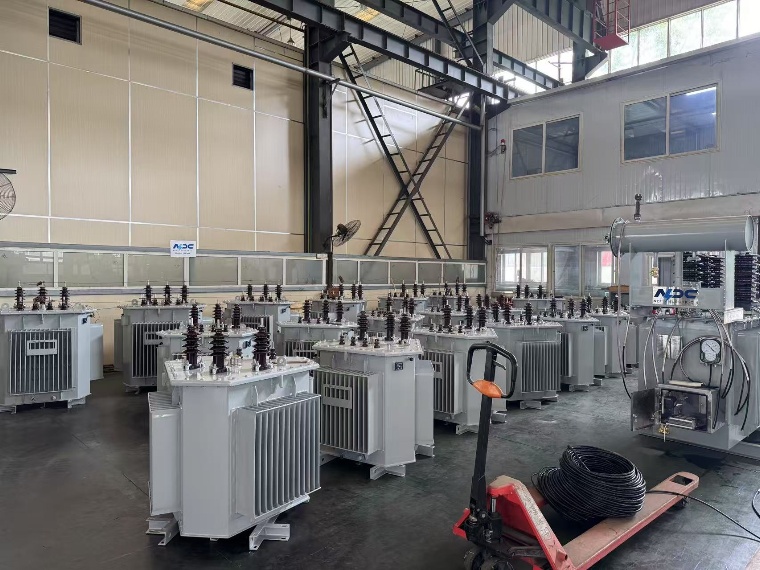
Progress Test
160kVA three-phase oil-immersed transformers progress testing is an inspection and test performed at various stages of the transformer manufacturing process to ensure that each link in the production process meets the quality standards and technical requirements and that the final product meets the expected performance and quality requirements. Progress testing usually includes:
Component inspection: Inspect the main components of the transformer (such as core, winding, insulation material, etc.) to ensure that they meet the design drawings and technical specifications.
Winding inspection: Check the manufacturing process of the winding, the selection of insulation materials, and their quality.
Welding inspection: Check the welding quality of the oil tank and other important components to ensure that their structure is firm and leak-free.
Preliminary electrical test: After the various components of the transformer are assembled, a preliminary electrical performance test is performed to ensure that all electrical connections are correct and the system can work properly.
Pressure and sealing test: Ensure the sealing of the transformer tank and its pipelines to avoid oil leakage during transportation and use.
Cooling system inspection: Check the effectiveness of the oil-immersed cooling system to ensure that the oil circulation system operates normally.
The purpose of progress testing is to detect potential problems in the production process in a timely manner and reduce problems that occur when the final product leaves the factory. These test records are often used for quality control, helping manufacturers ensure that the process meets standards at each stage.
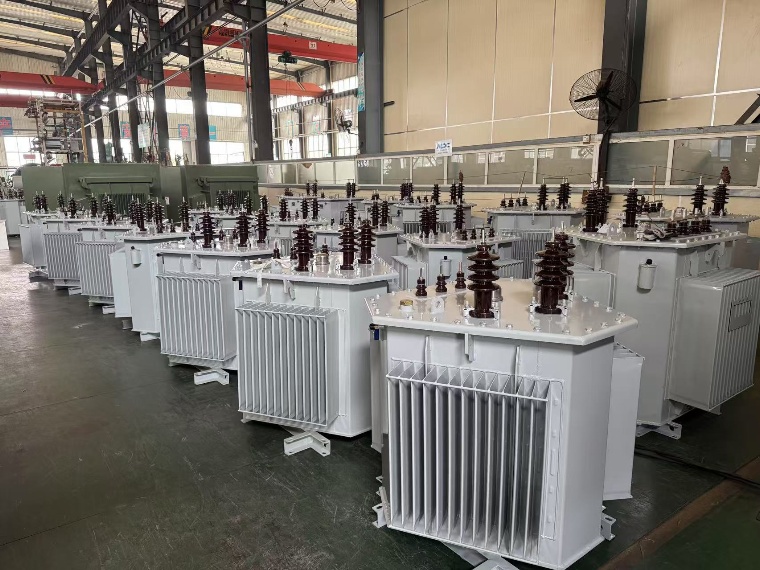
Design Tests
All transformer will be test after finished the production, test items as below:
♦ Insulation Power Factor
♦ Ratio, Polarity, and Phase Relation
♦ Winding Resistance
♦ Impulse Tests
♦ On load Loss Test
♦ No Load Loss Test
♦ Leak Test
♦ DC Insulation Resistance Test
♦ Transformer Turns Ratio/TTR (All Tap Voltages)
♦ Impedance Voltage & Load Loss (Rated Voltage)
♦ Polarity, 1-Ph / Phase Relation, 3-Ph (Rated Voltage)
♦ Excitation & No-Load Loss (Rated Voltage)
♦ Applied Voltage
♦ Induced Voltage
♦ Lightning Impulse
♦ Insulation Resistance (Rated Voltage)
♦ Temperature Rise
♦ Dielectric Withstand (Hipot)
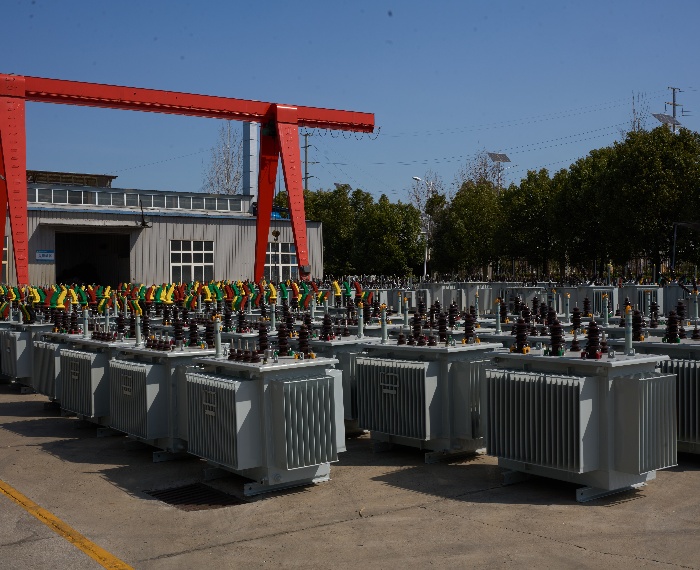
Transformer Factory Acceptance Test
Factory Acceptance Test (FAT) for a 160 kVA three-phase oil-immersed transformer is a series of important tests to ensure that the transformer meets the design specifications and quality standards. It is usually carried out after the transformer is produced and assembled. The test content includes several aspects:
First, Appearance inspection to ensure that the appearance of the transformer is intact, and the oil tank, terminal blocks, nameplate, protection devices, and other components are intact. Then Electrical performance test, including no-load voltage test, load loss and no-load loss test, and short-circuit impedance measurement, is conducted to ensure that the electrical performance of the transformer under different working conditions meets the standards. Insulation strength test is a key link. Through high-voltage testing, it is tested whether the insulation system of the transformer can withstand the design voltage to prevent leakage or short-circuit accidents.
In addition, a Temperature rise test will be carried out to monitor the temperature of the transformer oil and windings under rated load to ensure that it will not overheat under normal working conditions and meet the safe temperature range. Oil quality inspection includes testing the insulation strength, water content, and acid value of the transformer oil to ensure that the oil quality meets the requirements and is not contaminated. Noise test is used to measure the noise level of the transformer during operation to ensure that it meets environmental protection and noise control standards.
Finally, a load test is carried out to simulate different load conditions to verify the performance and stability of the transformer in actual use. Protection function test includes verification of overload, short circuit, and temperature protection functions to ensure that the transformer has reliable protection measures to avoid failure.
Routine Test - Polarity 1-Ph
Voltage source: usually 500 V, 1000 V or customized as needed
Environmental monitoring: Temperature and humidity meter (records ambient temperature and humidity)
Check the connection terminals and wiring to ensure that there is no looseness or contamination.
Test under suitable environmental conditions: relative humidity less than 75% and no rain (recommended temperature: 20-30°C).
Connect the test equipment to the bushing or terminal of the device under test and ensure proper grounding.
Apply Test Voltage:
Select the appropriate test voltage according to the rated voltage of the device. For single-phase systems, the applied voltage should comply with the equipment specifications (such as 220V or 380V, etc.).
Phase sequence: Confirm whether the phase sequence of the power supply is correct.
Polarity: Check whether the wiring meets the predetermined polarity (positive and negative terminals are connected correctly).
Voltage: The actual voltage value during the test.
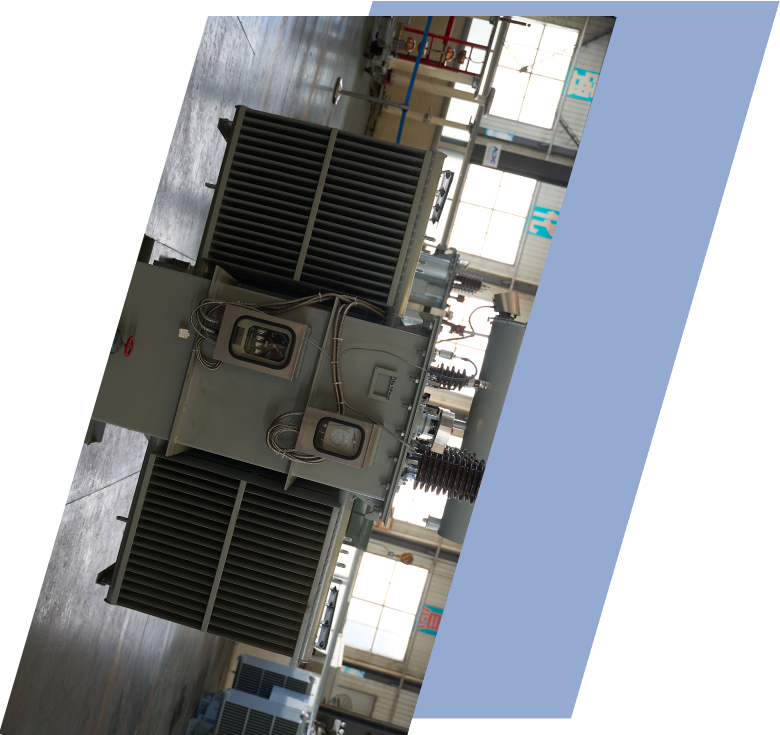
Application
Technical Advantages
Product Packaging
Related Products
FAQ From Customers
-
What is a Transformer?A transformer is an electrical device used to change the voltage of alternating current (AC). It works on the principle of electromagnetic induction, converting high-voltage current into low-voltage current or low-voltage current into high-voltage current. Transformers are widely used in power transmission, distribution systems, and various electronic devices.
-
What are the main uses of a transformer?The main use of a transformer is voltage conversion. Transformers are used in power transmission systems to help transfer electricity from power plants to consumers. In addition, transformers are also used in electronic devices such as chargers, televisions, power adapters, etc., to adjust the voltage to meet the requirements of different devices.
-
Do you have UL listed?Yes, our transformer has UL listed. We have exported to America many pad mounted transformer,substation transformer and HV.

